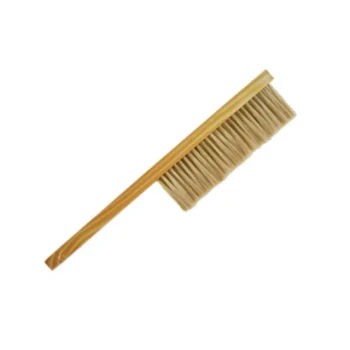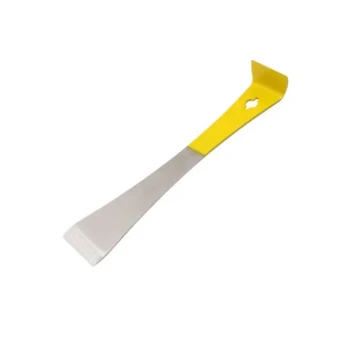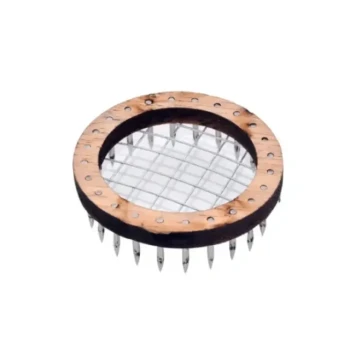Yes, you must wax plastic foundation for it to be successful. Bees are biologically driven to build their comb from beeswax, and they do not like the texture or scent of bare plastic. Without a substantial coating of wax, your bees will often build comb around the foundation with minimal contact, creating irregular and unusable frames that can hinder colony development and make inspections difficult.
The core principle to understand is that bees build on wax, not plastic. The plastic foundation serves only as a structural guide, but the wax coating is the essential starting point that encourages them to draw out uniform, stable honeycomb.
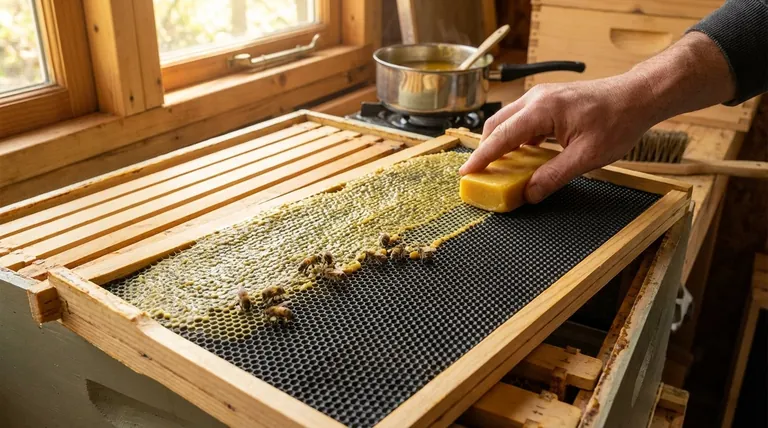
Why Bees Reject Uncoated Plastic
The Fundamental Disconnect
Bees have evolved over millions of years to interact with beeswax. It is their natural building material, communication medium, and nursery structure.
Bare plastic is a completely foreign material. It lacks the familiar scent and texture that instinctively signals to a bee that this is a proper surface to begin building on.
The Consequences of Insufficient Wax
When presented with poorly waxed plastic, bees will often try to "work around" the problem. They may build brace comb connecting the frame sides, leaving the plastic foundation untouched in the middle.
This results in a mess of cross-comb that is difficult to inspect and impossible to extract honey from. In essence, the frame becomes useless, and the resources the bees spent building that irregular comb are wasted.
"Pre-Waxed" Isn't Always Enough
Many plastic foundations are sold as "pre-waxed," but this factory coating is often extremely thin. It can be just enough to change the color of the plastic but not enough to provide the scent and texture your bees need.
If the coating is too light or has aged in storage, you will need to add another layer of wax yourself to ensure good acceptance.
Understanding the Trade-offs
The decision to use plastic foundation is a balance of cost, durability, and your own labor. It's critical to understand how it compares to the alternatives.
Plastic Foundation: Durability and Cost
Plastic foundation is favored by many commercial beekeepers because it is robust and will not break apart in a honey extractor. It is also reusable for many seasons and generally cheaper than wax foundation. Its primary downside is the mandatory and critical step of ensuring it is heavily waxed.
Wax Foundation: Natural Acceptance
Frames with pure beeswax foundation are the most readily accepted by bees, as it is their natural material. This often leads to faster comb construction. However, wax foundation is more fragile, susceptible to damage in hot weather, and more likely to break during honey extraction.
Foundationless: The Natural Approach
Some beekeepers prefer to use no foundation at all, allowing bees to build their own comb from scratch within an empty frame. While this is the most cost-effective method and produces natural-sized cells, it requires significant skill and management to prevent the bees from building chaotic cross-comb.
Making the Right Choice for Your Hive
Your choice depends entirely on your goals, experience level, and how much hands-on work you are willing to perform.
- If your primary focus is durability and long-term cost savings: Choose plastic foundation, but commit to applying a heavy coating of beeswax yourself before use.
- If your primary focus is rapid bee acceptance and simplicity: Choose wax foundation, but be prepared for its fragility and higher initial cost.
- If your primary focus is natural beekeeping and you are an experienced beekeeper: Foundationless frames can be a good option, but they require close monitoring to ensure proper comb development.
Ultimately, providing a proper foundation is one of the most important ways you can set your colony up for success.
Summary Table:
| Foundation Type | Key Consideration | Best For |
|---|---|---|
| Plastic Foundation | Requires a heavy wax coating for bee acceptance. | Beekeepers focused on durability and long-term cost savings. |
| Wax Foundation | Highly accepted by bees but is fragile. | Beekeepers prioritizing rapid bee acceptance and simplicity. |
| Foundationless Frames | Allows natural comb building but requires skilled management. | Experienced beekeepers focused on natural beekeeping practices. |
Set your apiary up for success with the right foundation.
As a commercial beekeeper or distributor, you need reliable, high-quality equipment that supports healthy, productive colonies. At HONESTBEE, we supply durable plastic foundation and premium beeswax to ensure your frames are properly prepared for maximum bee acceptance and efficient comb building.
Let our wholesale-focused expertise help you build a stronger, more productive operation. Contact our team today to discuss your beekeeping supply needs.
Visual Guide
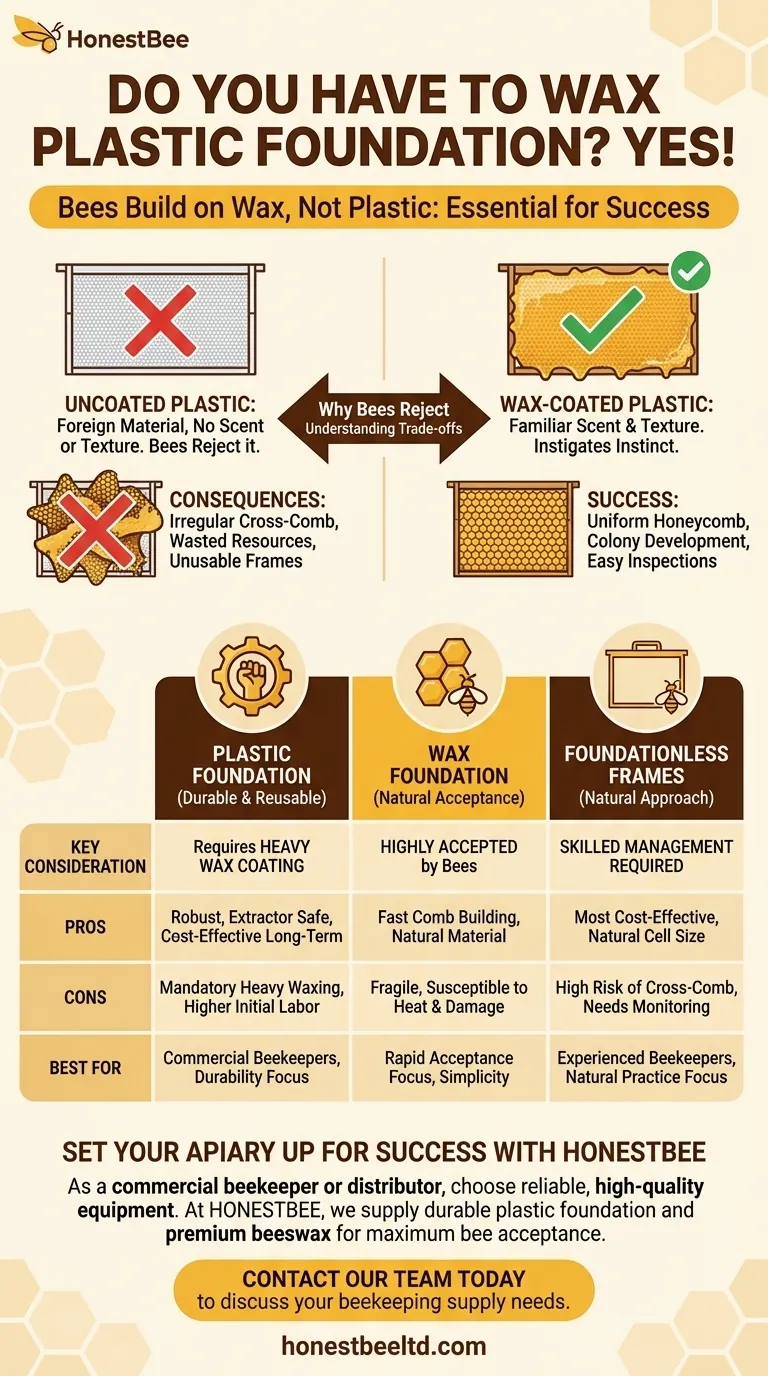
Related Products
- Food Grade Plastic bee Foundation for Bee Frames
- Beeswax Foundation Sheets Beehive Foundation for Wholesale
- HONESTBEE Pneumatic Dual Wire Embedder for W-Pattern Foundation Wiring
- Boardman Entrance Bee Feeder Durable Galvanized Steel and Wood Construction for Beekeeping
- JZBZ Type Wide Base Plastic Queen Cell Cups for Base Mounting and Queen Rearing
People Also Ask
- What additional step can improve the performance of plastic foundation in the hive? Apply a Generous Coat of Beeswax
- How to get bees to use plastic foundation? Master the Wax Coating and Resource Strategy
- How do you get bees to draw out plastic foundation? Master the Art of Comb Building
- Why is it beneficial to coat plastic foundation with beeswax? Boost Hive Acceptance & Comb Building
- What factors should beekeepers consider when choosing between beeswax and plastic foundation? A Guide to Durability vs. Natural Philosophy










